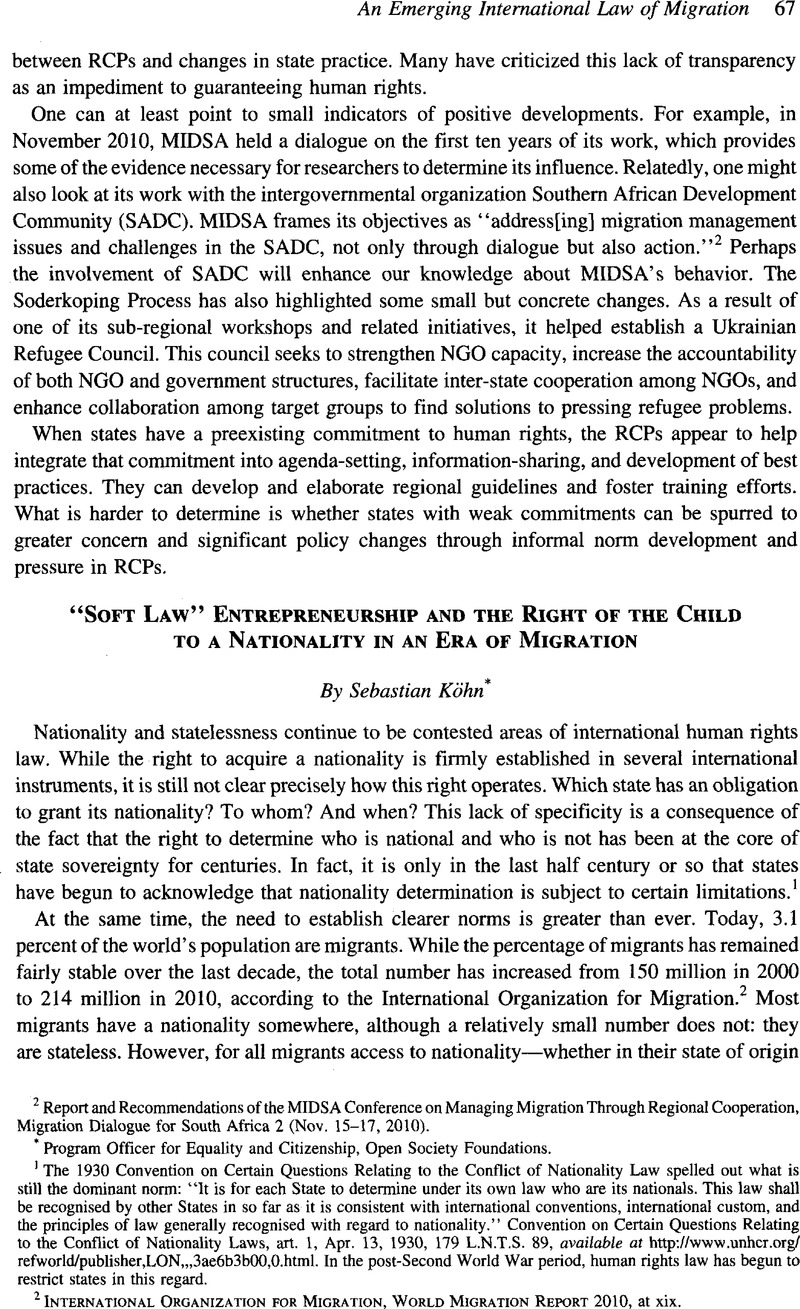No CrossRef data available.
Published online by Cambridge University Press: 28 February 2017

1 The 1930 Convention on Certain Questions Relating to the Conflict of Nationality Law spelled out what is still the dominant norm: “It is for each State to determine under its own law who are its nationals. This law shall be recognised by other States in so far as it is consistent with international conventions, international custom, and the principles of law generally recognised with regard to nationality.” Convention on Certain Questions Relating to the Conflict of Nationality Laws, art. 1, Apr. 13, 1930, 179 L.N.T.S. 89, available at http://www.unhcr.org/refworld/publisher,LON,,,3ae6b3b00,0.html. In the post-Second World War period, human rights law has begun to restrict states in this regard.
2 International Organization for Migration, World Migration Report 2010, at xix.
3 E.g., American Convention on Human Rights, art. 20(2); European Convention on Nationality, art. 6(2); African Charter on the Rights and Welfare of the Child, art. 6(3).
4 ACERWC, Commc’n No. 002/2009 (Mar. 22, 2011).